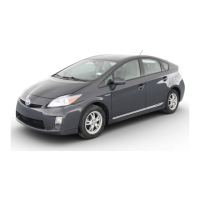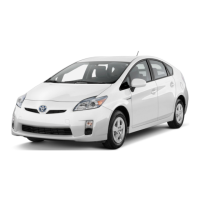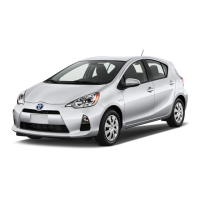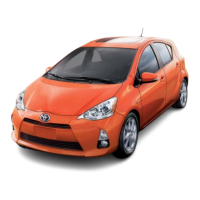Do you have a question about the Toyota PRIUS 2014 and is the answer not in the manual?
Information on the plug-in hybrid system, EV driving range, and system features.
Details on charging equipment, power sources, and charging procedures.
Information about keys, including electronic and mechanical keys, and key number plates.
Operations for smart key systems, wireless remote control, and door lock switches.
Adjusting front seats, rear seats, head restraints, seat belts, and steering wheel.
Operation of power windows, including jam protection and customization.
Procedure for opening the fuel tank cap and refueling the vehicle.
Information on the immobilizer system and its operation.
Correct driving posture, SRS airbags, front passenger occupant classification, child restraint systems.
Procedures for driving, starting, stopping, parking, and driving on hills/rain.
Explanation of gauges, meters, indicators, warning lights, and multi-information display.
How to operate headlights, fog lights, windshield wipers, and headlight cleaners.
Details on cruise control, dynamic radar cruise control, and driving assist systems.
Information on cargo, luggage, vehicle load limits, winter driving, trailer towing, and dinghy towing.
Operation of air conditioning, defogging, air outlets, and filters.
Information on audio system types, AUX/USB ports, and Bluetooth.
List of interior lights, front and rear interior lights, and illuminated entry system.
Details on bottle holders, auxiliary boxes, glove boxes, cup holders, and console box.
Information on sun visors, vanity mirrors, outside temperature display, power outlets, seat heaters, armrest, assist grips, floor mats, etc.
Cleaning and protecting the vehicle exterior and interior.
Maintenance requirements, general maintenance, scheduled maintenance, and DIY maintenance.
Procedures for DIY maintenance like hood, tire replacement, engine compartment, battery, tires, fuses, and light bulbs.
Emergency flashers, towing, and general troubleshooting.
Guidance on warning lights, messages, flat tires, hybrid system issues, keys, and battery problems.
Maintenance data, fuel information, tire information.
Customizable features for smart key, wireless remote, door locks, and lighting.
Items that need initialization after maintenance or battery disconnection.
How to report safety defects to NHTSA and Toyota.
French explanation of seat belt instructions.
French explanation of SRS airbag instructions.
Information on the plug-in hybrid system, EV driving range, and system features.
Details on charging equipment, power sources, and charging procedures.
Information about keys, including electronic and mechanical keys, and key number plates.
Operations for smart key systems, wireless remote control, and door lock switches.
Adjusting front seats, rear seats, head restraints, seat belts, and steering wheel.
Operation of power windows, including jam protection and customization.
Procedure for opening the fuel tank cap and refueling the vehicle.
Information on the immobilizer system and its operation.
Correct driving posture, SRS airbags, front passenger occupant classification, child restraint systems.
Procedures for driving, starting, stopping, parking, and driving on hills/rain.
Explanation of gauges, meters, indicators, warning lights, and multi-information display.
How to operate headlights, fog lights, windshield wipers, and headlight cleaners.
Details on cruise control, dynamic radar cruise control, and driving assist systems.
Information on cargo, luggage, vehicle load limits, winter driving, trailer towing, and dinghy towing.
Operation of air conditioning, defogging, air outlets, and filters.
Information on audio system types, AUX/USB ports, and Bluetooth.
List of interior lights, front and rear interior lights, and illuminated entry system.
Details on bottle holders, auxiliary boxes, glove boxes, cup holders, and console box.
Information on sun visors, vanity mirrors, outside temperature display, power outlets, seat heaters, armrest, assist grips, floor mats, etc.
Cleaning and protecting the vehicle exterior and interior.
Maintenance requirements, general maintenance, scheduled maintenance, and DIY maintenance.
Procedures for DIY maintenance like hood, tire replacement, engine compartment, battery, tires, fuses, and light bulbs.
Emergency flashers, towing, and general troubleshooting.
Guidance on warning lights, messages, flat tires, hybrid system issues, keys, and battery problems.
Maintenance data, fuel information, tire information.
Customizable features for smart key, wireless remote, door locks, and lighting.
Items that need initialization after maintenance or battery disconnection.
How to report safety defects to NHTSA and Toyota.
French explanation of seat belt instructions.
French explanation of SRS airbag instructions.
| Brand | Toyota |
|---|---|
| Model | PRIUS 2014 |
| Category | Automobile |
| Language | English |












